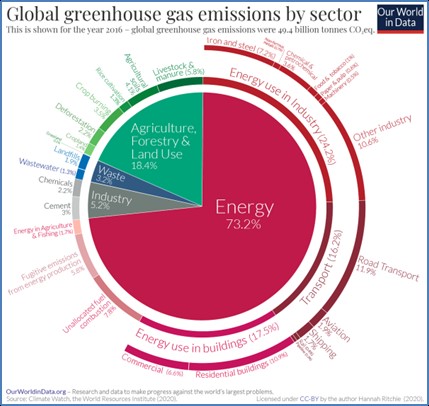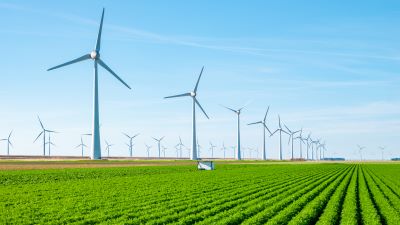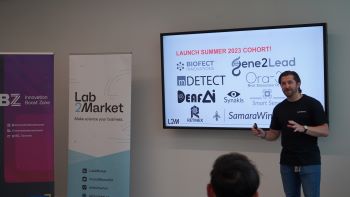Balance needed to find a sensible and affordable path to net-zero greenhouse gas emissions

NOTE: This is this second of a three-part series that examines the components required to achieve a sensible and affordable transition to net-zero GHG emissions. Part one is here and the third installment will be published in October.
Yogi Schulz has more than 40 years of information technology experience in various industries, including the energy industry; his specialties include IT strategy, web strategy and systems project management. His new book, co-authored by Jocelyn Schulz Lapointe, is “A Project Sponsor’s Warp-Speed Guide: Improving Project Performance.”
Achieving net-zero emissions is a critical goal in the fight against climate change. It refers to the balance between the amount of greenhouse gases (GHG) emitted into the atmosphere and the amount removed.
To reach net-zero, a comprehensive set of energy transition actions is required across most sectors of the economy, by almost all nations of the world, and with leadership from various multi-national organizations.
Industrial decarbonization
 The industrial sector is responsible for 24 per cent of global GHG emissions, as illustrated by the Global GHG emissions by Sector chart at right. Achieving net-zero emissions requires the following:
The industrial sector is responsible for 24 per cent of global GHG emissions, as illustrated by the Global GHG emissions by Sector chart at right. Achieving net-zero emissions requires the following:
- Deploying carbon capture, utilization and storage (CCUS) technologies in industrial processes, such as oil and natural gas, cement, steel and chemical production.
- Implementing emerging production technologies with lower GHG emissions.
- Researching ways to use more captured carbon dioxide (CO2) in commercial applications, such as manufacturing cement.
- Increasing the use of recycled materials.
- Adopting more circular economy
- Improving energy efficiency in industrial processes.
Throwing up roadblocks to industrial investments is counter-productive to achieving net-zero because those roadblocks will slow the energy transition. The energy transition requires vast investment and many permits. For example:
- Mines must be built to produce a wide variety of critical minerals.
- Many renewable electricity generation facilities must be built.
- More high-voltage transmission lines must be built to carry the additional electricity and better utilize the capacity of renewable electricity generation.
- More low-voltage distribution lines must be built to carry the additional electricity that households and businesses will consume.
- More oil and natural gas resources must be developed to ensure reliable energy during the transition.
Phasing out fossil fuel subsidies
Governments must eliminate subsidies supporting fossil fuel production, refining and consumption. The chart below illustrates the enormity of these fossil fuel consumption subsidies in some countries. These national subsidies encourage energy waste that undermines net-zero goals.
_new.png) Fossil fuel subsidies reached a record $7 trillion last year as governments supported consumers and businesses during the global spike in energy prices caused by Russia’s invasion of Ukraine and the economic recovery from the pandemic, according to the International Monetary Fund.
Fossil fuel subsidies reached a record $7 trillion last year as governments supported consumers and businesses during the global spike in energy prices caused by Russia’s invasion of Ukraine and the economic recovery from the pandemic, according to the International Monetary Fund.
Instead of providing subsidies, these financial resources should be directed towards debt repayment and infrastructure improvement, which can improve the lives of many citizens. Also, redirecting subsidies into renewable energy research, development and deployment can accelerate the transition to a low-carbon economy.
Political realities and the time required for consumers to adjust to higher prices suggest phasing out subsidies will take time.
Energy efficiency and conservation
Improving energy efficiency in buildings, industries and appliances is a cost-effective way to reduce GHG emissions. This transition involves:
- Implementing stricter energy efficiency standards.
- Further developing and promoting energy-efficient technologies.
- Retrofitting existing infrastructure.
- Raising awareness about energy conservation practices.
- Reducing energy waste through smart grid systems and energy management technologies.
The chart below indicates significant global spending on energy efficiency improvements. How sufficient this expenditure is to achieve net-zero is unclear.
 Many households and businesses think their individual contributions to energy efficiency and conservation are so small as to be immaterial; this thinking and resistance to change slow the transition to net-zero.
Many households and businesses think their individual contributions to energy efficiency and conservation are so small as to be immaterial; this thinking and resistance to change slow the transition to net-zero.
Research and innovation
Continued investment in research and development is vital for achieving net-zero emissions. Emerging technologies that can benefit from more funding include:
- Many ideas to advance energy storage cost and efficiency.
- Cost reduction of carbon capture and storage.
- Direct air capture of CO2. Canada is considered to be an international leader in the research and development of this technology. For example, Carbon Engineering Ltd., based in Squamish, B.C., is building a US$1.1-billion direct air capture facility in West Texas.
- Innovation in sustainable agriculture – another area where Canada is a global leader.
- Advances in air and rail transportation.
- Revised industrial processes, especially steel and cement production.
- Creating valuable chemicals from captured CO2.
Some have discounted the value of breakthrough technologies in addressing climate change. However, breakthrough technologies have solved all the problems humanity has encountered in the past. Climate change is no different.
Collaboration between governments, academia and the private sector will drive innovation and scale up promising solutions.
Sustainable land use, ocean use and agriculture
Land use, ocean use and agriculture contribute to GHG emissions through:
- Deforestation – Reduces desirable CO2 capture
- Livestock production – Generates significant methane emissions.
- Nitrogen fertilizer use – Generates nitrous oxide emissions.
- Ocean pollution – Undermines the ability of the oceans to sequester carbon.
Protecting and restoring forests, reducing ocean pollution, promoting sustainable agriculture practices, and reducing food waste are essential for net-zero emissions. Implementing regenerative agricultural techniques, such as organic farming, agroforestry and precision farming, can help sequester carbon in soils and reduce GHG emissions. New and improved plant species can reduce water, fertilizer and pesticide usage.
Those who suggest not harvesting forests at all, ceasing livestock production and abandoning fertilizer don’t recognize these actions lead to reduced quality of life and perhaps mass starvation.
Innovative and focused actions are required to achieve net-zero emissions and mitigate climate change. However, these actions must be balanced with maintaining a good quality of life and a productive economy.
R$
Events For Leaders in
Science, Tech, Innovation, and Policy
Discuss and learn from those in the know at our virtual and in-person events.
See Upcoming Events
You have 0 free articles remaining.
Don't miss out - start your free trial today.
Start your FREE trial Already a member? Log in
By using this website, you agree to our use of cookies. We use cookies to provide you with a great experience and to help our website run effectively in accordance with our Privacy Policy and Terms of Service.





